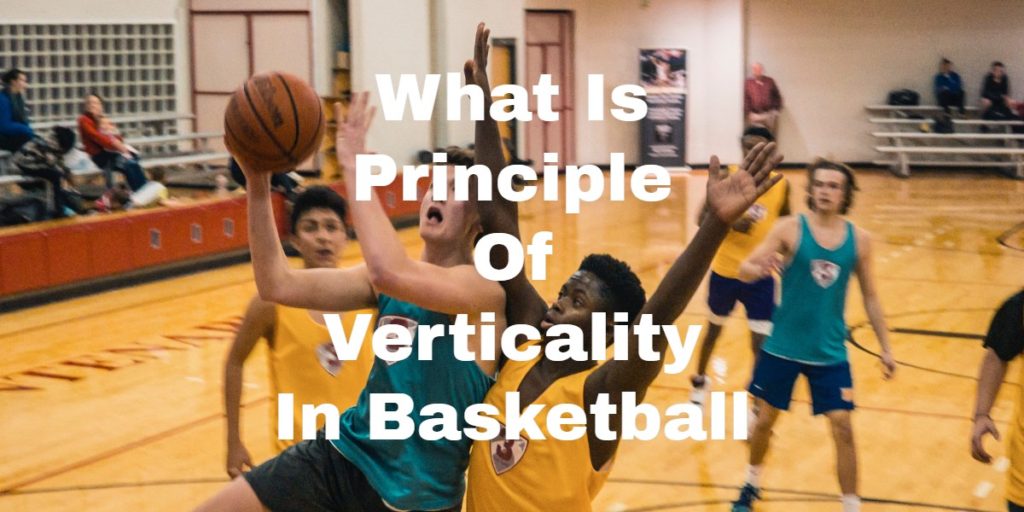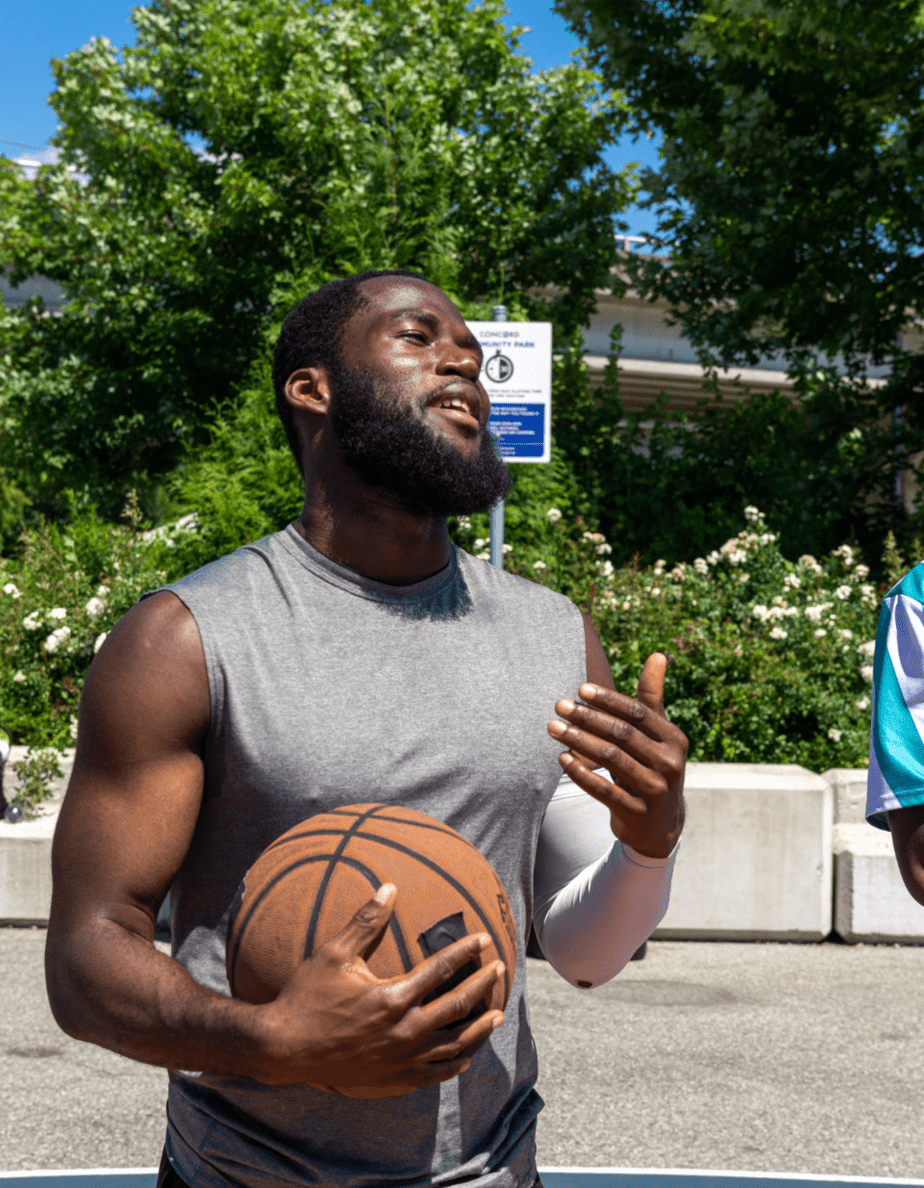The Truth About the Principle of Verticality in Basketball
As I was researching for an article I was writing about the restricted zone in basketball, I came across the principle of verticality in basketball. It comes up when you are trying to figure out what is an offensive charging foul around the circular restricted area or a displacement foul. These are all pretty complicated concepts but are important to understand when teaching your team defense around the hoop or when you are trapping. If you are here for a quick definition I won’t keep you waiting. Let’s answer that now.
What Is The Principle Of Verticality In Basketball?
The principle of verticality in basketball is a rule that states that every player is entitled to the space above him. It’s like an invisible cylinder extending upwards from a player, within which they have the right to move freely.
The ABCs of the Principle of Verticality
To use a little more color, the principle of verticality in basketball declares that every player has a right to the space above him. Picture it as an invisible cylinder extending skywards – a private piece of air real estate. It’s like an elevator, only without the Muzak and awkward small talk. If a player does invade this space, it’s the equivalent of crashing someone else’s party. Not cool. And the repercussions? Usually, a foul.
The verticality principle was officially introduced into NBA officiating in the 1960s. The rule was developed to protect players’ rights to their vertical space, thereby reducing unnecessary contact and injury risk.
Practical Aspects
So what does this rule look like in action? It’s like riding a bumpy subway while keeping your balance – not touching or pushing the passengers around you. It’s this principle that allows defenders to jump straight up to challenge a shot, even in crowded spaces. They are, in essence, sticking to their invisible cylinder. A basketball referee’s job, not unlike an overworked air traffic controller, is to keep everyone in their respective lanes.
The video below gives you a well-written definition and then some good examples of how it plays out in several NBA basketball games.
How the Principle of Verticality Plays into Fouling
When a player masters their vertical space, they’re less likely to foul. But let’s be real. It’s basketball, there’s going to be contact. The trick is differentiating between legal and illegal contact.
Imagine this. A player makes a jump shot. A defender, maintaining his vertical space, jumps to challenge. Their hand’s brush in mid-air – that’s legal contact. Now, if the defender leans over into the shooter’s space? We’ve got a foul situation.
Joe Borgia, NBA senior vice president for referee operations, explains the principle of verticality in the video below and goes through some examples.
Debates and Controversies – All Part of the Game
Like any rule in any game, the principle of verticality has been in many a heated debate. In one corner, you have those praising it for keeping gameplay clean and strategic. In the other corner, critics argue that it’s vague and open to interpretation.
Take the infamous 2013 NBA Playoffs clash between the Pacers and the Heat. Did Dwayne Wade break the cylinder on that foul? Take a look at the video below. Not that it matters when you Lebron James in his prime.
How Verticality Shapes the Game
This principle plays a significant role in how coaches teach their players to defend. Verticality and the principle of legal guarding position are big parts of the defensive game. In my opinion, your players can get a reputation for keeping their verticality or not. As an example, Creighton University’s center, Ryan Kalkbrenner, two-time Big East Defensive Player of the Year, became well known for blocking without fouling. In other words, keeping his verticality (being 7′ 1″ certainly helps).
Whether you want to think so or not, the way you teach your team verticality may translate into how many calls go for or against you if you have the same refs year in and year out. If referees get used to seeing your teams keeping their verticality you may just get the benefit of the doubt on calls where your player may be in the grey zone.
Conclusion: Basketball – A Game of Inches (and Vertical Space)
So there you have it. A crash course in the verticality so you know how to explain it the next time your player asks “What Is The Principle Of Verticality In Basketball?”. A principle as essential to the game as the ball itself that shapes how the game is played, officiated, and strategized.
Frequently Asked Questions
How does the principle of verticality affect fouls?
The principle of verticality plays a big role in determining fouls. If a defender maintains their vertical space and jumps straight up to challenge a shot, any contact made is generally considered legal. However, if the defender leans into the shooter’s space, this is usually considered a foul.
How does the principle of verticality influence game strategy?
This principle significantly impacts how players and coaches play the game. For example, it influences how players defend against shots, challenging them while staying within their vertical space.
Is the principle of verticality always clear-cut in basketball games?
Like any rule in sports, the principle of verticality can sometimes be subject to interpretation, which can lead to controversies during games. The exact application of the rule can depend on the specific situation and the referee’s judgment.
When was the principle of verticality introduced in basketball?
The principle of verticality was introduced in the 1960s to regulate players’ movement and ensure fair play. It has since become a cornerstone of basketball rules.

Troy Wallace
Troy Wallace is Certified Basketball Speed Specialist and shares his experiences in trying to stay as healthy as possible to stay on the court. He is active in coaching youth basketball in YMCA, Team Work Sports Nebraska, and, currently, in the Jr. Warriors program in Omaha, NE. Visit Troy's Full Author Bio Page or email him directly.
Meaningful conversations happening daily about training, recovery, and injury-specific rehabilitation as well as sport-specific discussions on playing, coaching and refereeing your favorite sport. We welcome experts and those with curious minds seeking answers.
Join The Stay On The Court Community!